When it opened 50 years ago today, Melbourne Airport connected our city to the world with jet-age panache and ‘70s cool.
And while it may be experiencing a major downturn in traveller numbers during the coronavirus crisis, the airport has been a tourist destination in its right over the past five decades.
DOWNLOAD YOUR ANNIVERSARY POSTER BELOW
It’s the airport Melbourne needed because Essendon Airport, our first aviation gateway, was too small for jets — especially long-haul overseas flights that could land in Sydney.
Phil Vabre, vice-president of Melbourne’s Civil Aviation Historical Society and Airways Museum, said by the late 1950s, when the federal government approved plans for a new Melbourne Airport, Essendon could not expand because of surrounding housing.
Tullamarine was beyond the suburbs, with room to block future surrounding development, and it was largely flat.
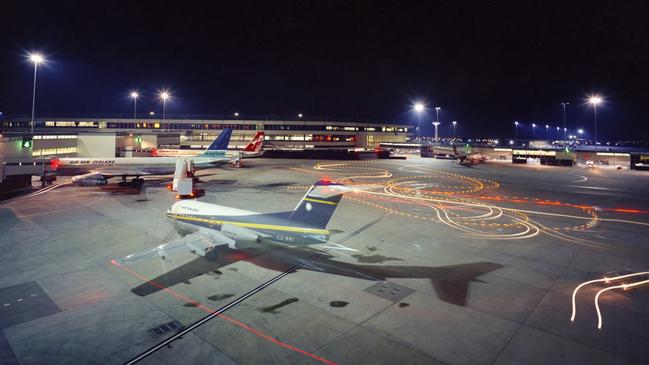
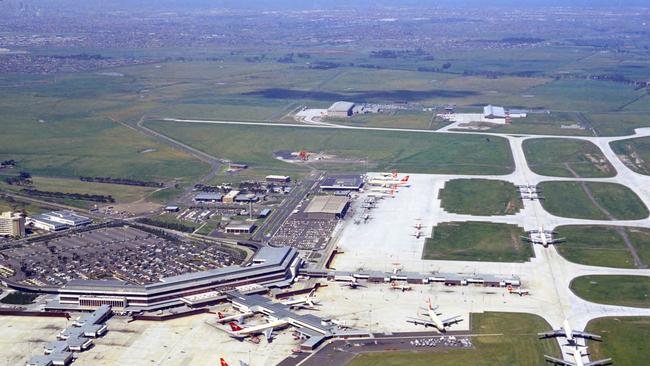
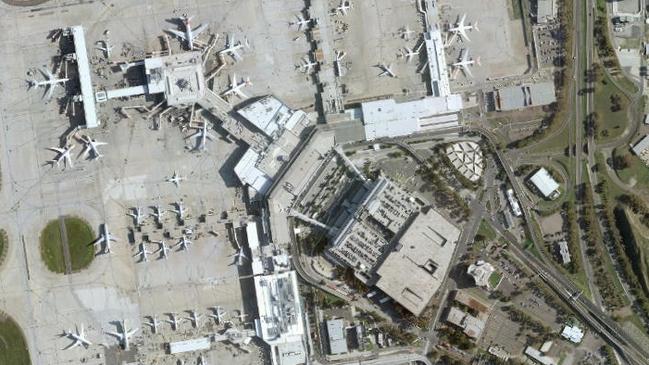
Other sites were considered including Fishermans Bend aerodrome and Laverton, but Tullamarine won out despite major opposition.
“(Media magnate) Frank Packer was strongly opposed to a new Melbourne Airport because he was very Sydney-centric and thought all international aircraft should go to Sydney. Other people had development proposals (around Tullamarine) and were also opposed,” Mr Vabre said.
Budget constraints delayed construction until late 1964 but the design was solid, he said.
“They were able to design the airport in a very forward-looking way. They designed for the biggest aircraft that were foreseen at the time, which were A380-sized. Nobody though aircraft that large would appear for a long time,” he said.
Even so, in 1969, the runways were extended for the future Boeing 747.
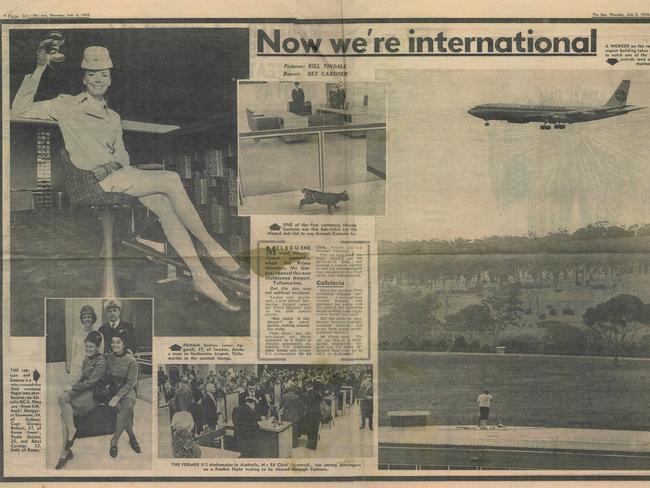
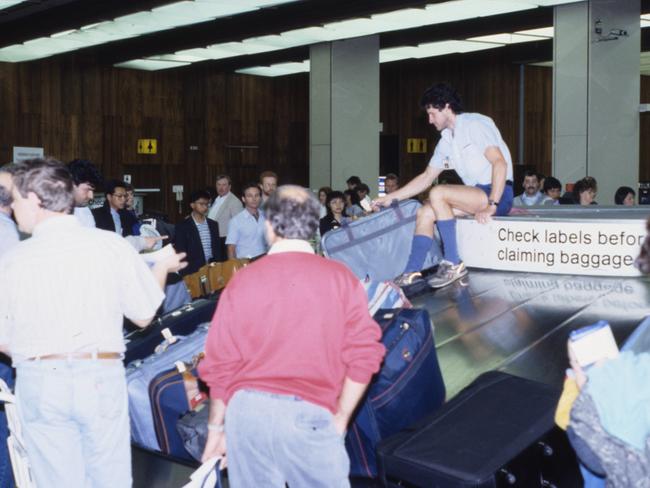
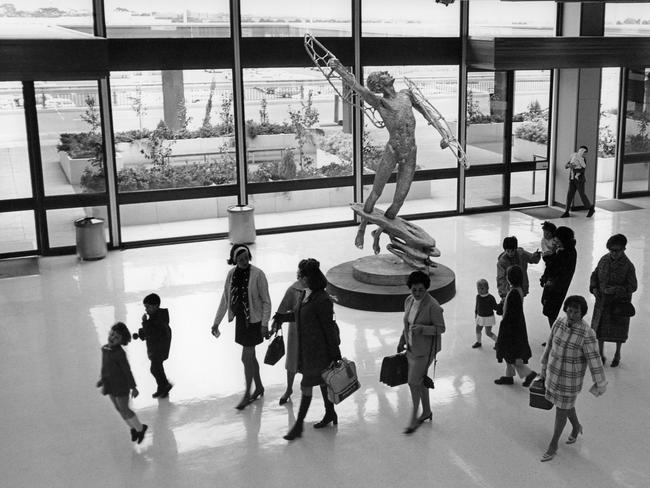
A MODERN MASTERPIECE
When it opened on July 1, 1970, Melbourne Airport was a showpiece.
Modern art and extensive timber panelling greeted travellers in the arrivals hall.
Across the terminals, there were large waiting areas with low-slung lounges and sculptures, and there were bars, a swanky cocktail lounge and a five-star restaurant, Top Air.
A rooftop observation deck allowed Melburnians to immerse themselves in the jet age.
Across the ground-level carpark, past the DC-3 that was suspended from an arch, stood the ultra-modern Travelodge hotel and the Astrojet Space Centre, a new “airport city” concept designed to appeal to locals and travellers.
Astrojet had a 230-seat cinema, offices, retail and a double-storey exhibition hall boasting a working model of the airport with control tower radio traffic and moving aircraft; a model Melbourne CBD that illuminated and detailed 88 prominent buildings and a permanent display of space and aviation artefacts.
“When the airport first opened, it was iconic for the whole state. It created opportunity for people to reach destinations that they could previously only dream of,” Melbourne Airport chief executive Lyell Strambi said.
“I remember the excitement as a young boy coming to the airport for an excursion, taking a guided tour through the Astrojet Centre and walking around the most innovative aviation infrastructure, at the time, in Australia.”
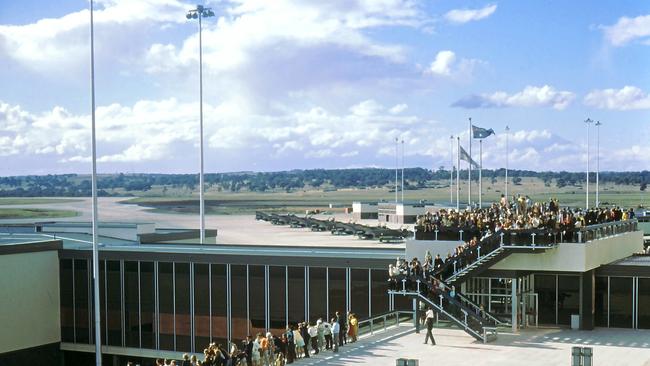
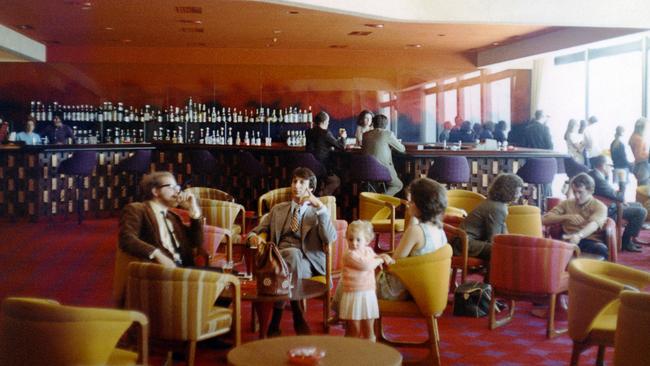
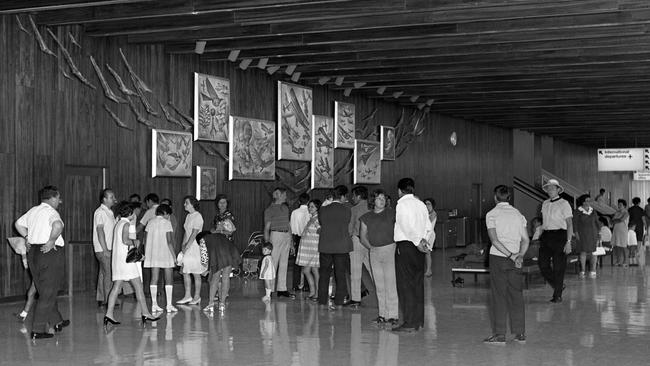
There was a supermarket, a florist, a pharmacy, an ANZ branch, a post office, a two-level bottle shop and cellar called the Liquor Locker, and a dentist’s office occupied by VFL powerbroker Dr Allen Aylett.
“It was a concept that was a bit before its time,” former general manager David Savenake said.
Although the retail area waned, school groups visiting the exhibition hall kept Astrojet viable, he said, until disaster struck in 1974.
“We had the most horrendous hailstorm. The airport fire service had to wash down the runways, which were inches deep in hail,” Mr Savenake said.
“Astrojet building had a flat roof. The hail blocked the downpipes. We had a lovely two-foot (60cm) swimming pool on the roof, which collapsed.”
The exhibition hall was destroyed. Much of the building was flooded.
Once repaired, Ansett took much of the space. The hall housed a Boeing 737 flight simulator and a cabin simulator with inflatable emergency slides.
Astrojet was abandoned after Ansett’s 2001 collapse.
The cinema and Liquor Locker remained until 1978, its place on Commonwealth land allowing management to avoid Victoria’s restrictive licensing laws.
Mr Savenake said the Liquor Locker could sell beer cheaper than Victoria’s then-regulated prices, and the cinema was able to offer films with a chicken and champagne supper years before other cinemas could serve alcohol.
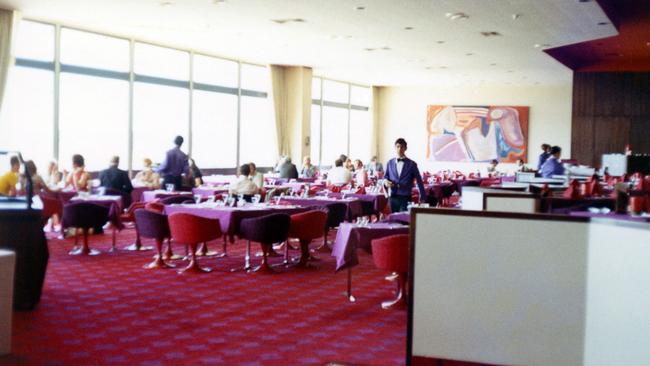
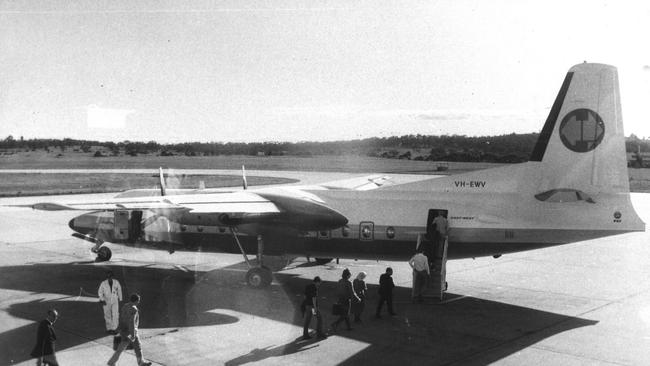
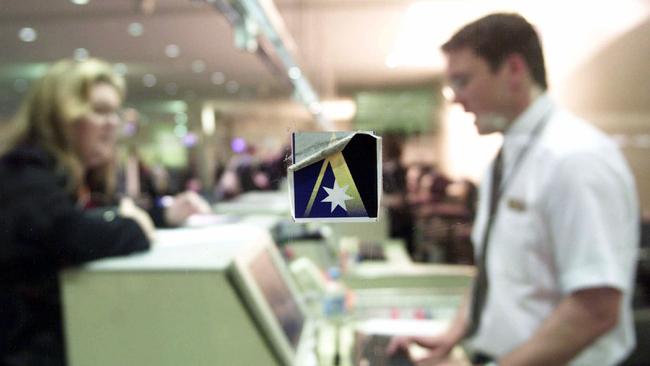
The gourmet Top Air restaurant and its cocktail bar in the international departure terminal used the same loophole to serve drinks well after 10pm closing.
“In its day, Top Air was one of the only fine dining areas outside a hotel in Melbourne,” Mr Savenake said.
“Our executive chef, who we brought in from Luxembourg, only stayed for two years. He wanted a top, top restaurant and he found the clientele didn’t want that.
“The design of the restaurant and cocktail bar were done by George Krall. The cocktail bar had a ceiling of translucent inverted pyramids with all the lights inside. Top Air was very colourful – red and gold. Fine English china was brought in. It worked very well for a while, but as local visitors declined, it was not what the travellers wanted.”
Top Air survived menu changes, but it and the cocktail lounge closed in 1999 and the space redeveloped.
Mr Vabre said the airport started small but with future expansion in mind. There was still great capacity to extend terminals and build new runways without suburban encroachment, he said.
“Tullamarine allowed a direct connection with the rest of the world without passing through Sydney,” he said.
“It gives us the flexibility for 24-hour flights Sydney doesn’t have, and any assessment of the economic benefits would show the airport brings Victoria huge amounts of business, and convenience to the people here.”
AIRPORT KEEPS 50TH CELEBRATIONS GROUNDED
Instead of celebrating in the sky, Melbourne Airport is marking its 50th anniversary with the launch of its Junior Traveller initiative, an Australian-first aviation learning module that is entirely digital.
With school holidays under way, it is hoped the virtual resource inspires a new generation of aviation enthusiasts by showcasing behind-the-scenes vision of different aircraft, games, puzzles and challenges in addition to informative videos featuring air traffic controllers, pilots and airport staff.
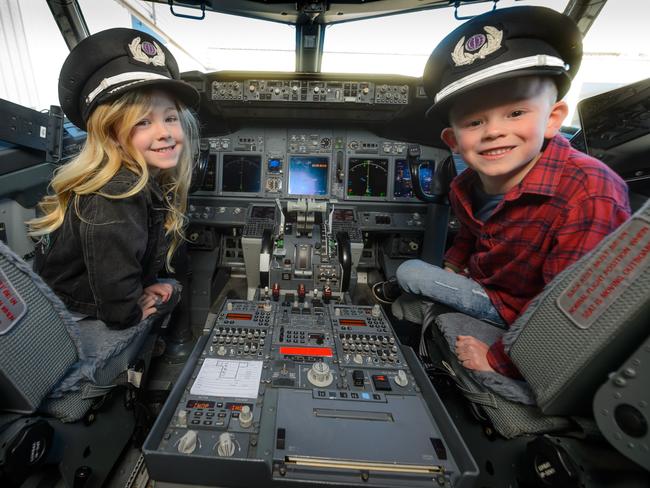
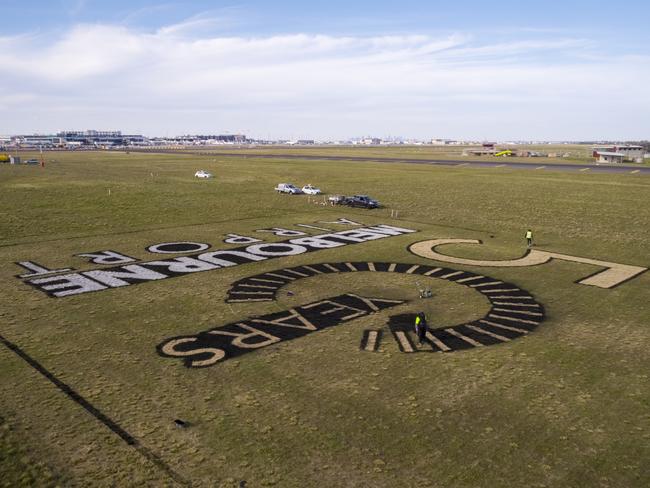
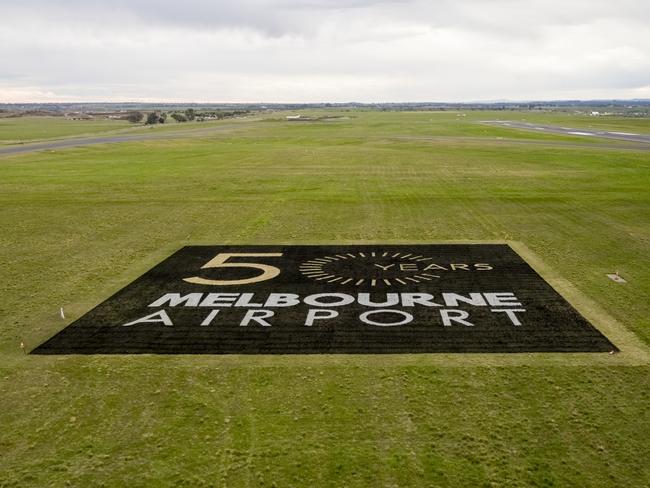
Since taking off, Melbourne Airport has seen 769 million travellers fly in and out of Victoria, with the domestic market accounting for 600 million passengers and the international division accounting for the other 169 million.
Like most businesses, COVID-19 has affected business operations at the airport, albeit temporarily.
“It’s ironic that we are celebrating 50 years since the birth of Melbourne Airport, as we get ready for a rebirth of flying activity to begin, post COVID-19,” Mr Strambi said.
“This will go down in history as another seminal moment in the history of Melbourne and its airport.”
How to download your poster to print at home:
- Click the banner above
- Once the poster has opened, right click the poster
- Save to your computer
- Print at home
Can’t see the link above? Click here.

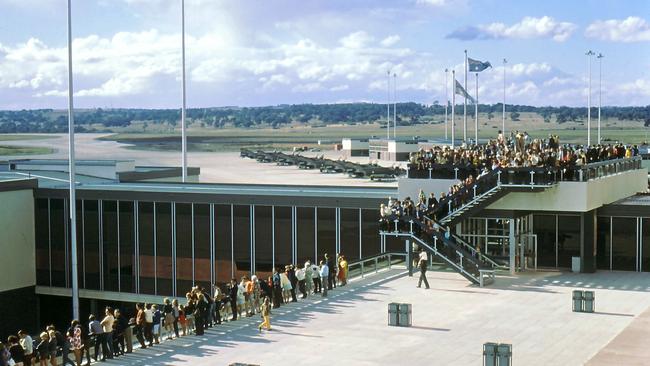
Add your comment to this story
To join the conversation, please log in. Don't have an account? Register
Join the conversation, you are commenting as Logout